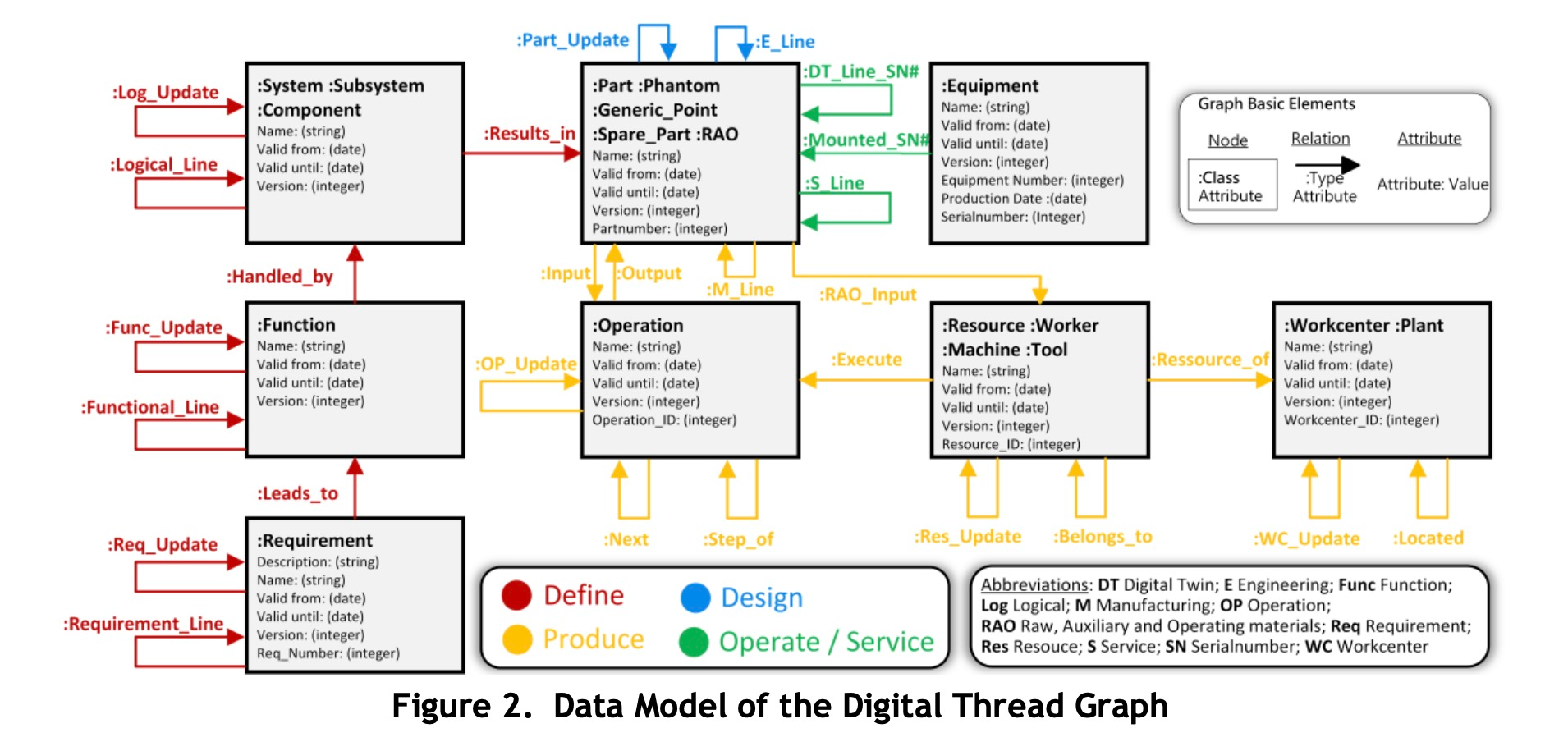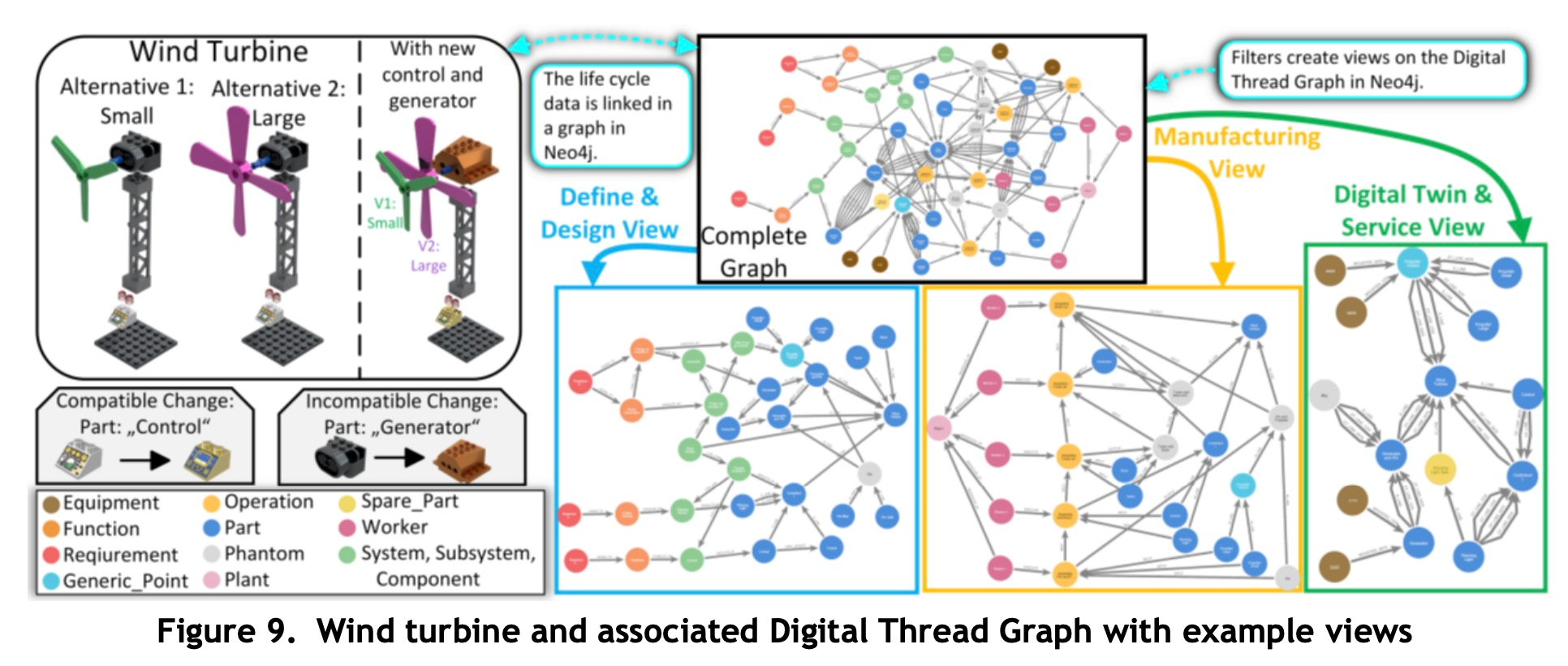Digital thread projects are trending these days. We live at the time, when data management technologies are advancing significantly beyond what was defined back in 1990s as a “Database”. Even the “holy grail” PLM ideas to build a vertical platform for product lifecycle management was around for the last decade, it feels like the excitement about building a single platform capable to provide answers to all engineering and manufacturing data management challenges is going down. The reality is multiple systems. Together with that, an emerging trend of GenAI and other data technologies focusing on how to bring intelligence to industrial software is grabbing more and more focus. When mindshare PLM vendors are focusing on lift-and-shift projects, adding “x” and “+” to their product name lines and figuring out how to get rid of PLM software versions by asking customers to upgrade using new SaaS (hosted) solutions, the question of “what is next” in PLM tech is becoming more and more interesting.
How modern PLM system vendors and technological providers can make the next leapfrog in the development product data management, product lifecycle, supply chain management. How PLM solutions and business processes can be improved by using up to date information in all phases of product development processes.
In my article today, I want to continue the discussions about advanced data management and how they will impact PLM business in the next few years.
Start with “Why?”
The book with the same name as a title of this paragraph is an interesting reading that help you to ask questions about why some organizations (and people) are more innovative, more influential and more profitable. What gives them this level of loyalty and power? Why it is so hard to repeat someone else success? The main point I took from this book is that people buy not “what you do”, but “why you do it”. An inspiration about what your product, technology, or service can deliver helps to position you in a different place. The golden circle: Why-How-What can help you to articulate it starting from the core belief, moving to the process or value, and eventually landing you with product or services.
The ability of individuals to make right decision at the right time is quickly becoming one of the most critical element of every business. Think about how much you would be able to do by predicting customer demand, supplier failure or product behavior over time. All these things are hidden in the data that technically exists, but very often lost and not captured in engineering and manufacturing organizations. To harness the power of data is why many organizations these days are thinking about how to optimize the way they want to transform their businesses.
How to do so is a great question. What is clear to me that by using data management technologies from 1990s, these goals are not achievable. The product information must be collected, processed, connected, enriched, and delivered to the decision markers at the right time in the right form. Which will then deliver the result (product or service).
In several of my previous articles, I wrote about using graph models and graph databases for future PLM (Product Lifecycle Management) development. The ever-increasing complexity and limitations of existing PLM platforms have necessitated a new approach, and graph technology provides a promising solution. Here are a few article:
Why Graph Knowledge Model is a future of Manufacture Product Lifecycle
Graph Databases, Unlocking Data and Building Linked Data Layers in PLM software
Graph Databases, GQL standard and future of PLM data layers.
A sweet spot for modern graph technologies
Timing is everything. Therefore, before thinking about how to transform the business, let’s make a check if the businesses are ready for the transformation. Here are a few interesting points:
- Growth of Complexity and Limitations of Existing PLM Platforms: Traditional PLM systems are becoming increasingly inadequate in managing the growing complexity of product data and processes. The rigid, hierarchical data structures used by conventional PLM systems struggle to handle the interconnected and dynamic nature of modern product development.
- Failure of vertically integrated large PLM suites and integrations: The continues fight for bringing a single platform to solve all problems and make a great marriage between large PLM and ERP providers is an evidence that companies need to find solutions elsewhere. The belief that existing PLM is mission critical and important for manufacturing goes below 40% based on the recent analytical researches.
- Opportunity for Polyglot Persistence and Digital Thread Models Using Graphs: The concept of the digital thread – an integrated view of product data across the lifecycle – can be more effectively realized through graph databases. These databases excel at managing complex relationships and can integrate multiple data sources, supporting polyglot persistence where different types of databases are used together to leverage their unique strengths.
My attention was recently caught by an insightful article by Martin Eigner and Nico Kasper on LinkedIn, which discusses similar themes. You can download and read the article (it is free) here – The digital thread for system lifecycle management with a native graph database in a polyglot architecture. Here are a few screenshots from their article, which highlight the potential of graph models in PLM.
Here are some of my most favorite pictures and points from the article. You can learn how powerful is graph model from the descriptive perspective and operational perspective.

One of the most important things in product lifecycle management – lifecycle phases (and views) can be modeled using graphs.

The holistic view of graph based data models and views.

Possible Trajectories for PLM Vendors Moving Forward
While using of graph data models, graph databases and technologies can benefit organizations and technological vendors, most of these projects will stay on the level of prototypes and custom development until they will not be adopted by PLM software. What can change the trajectories of PLM product development and, especially, those that called by CIMdata as mindshare PLM software.
In my view, PLM vendors have several possible trajectories to embrace graph technologies:
- Enhance Existing PLM Core Models with Pseudo Graph Technologies: Some PLM vendors are already developing their own graph technologies. This approach involves incorporating graph-like capabilities within the existing PLM framework and databases, allowing for improved data connectivity and relationship management without a complete overhaul of the system. While this is probably the simplest way, it is also the least efficient. They key element – graph database technology is absent data.
- Extend Data Modeling in Existing PLM Platforms with Leading Graph Database Products: By integrating industry-leading graph database solutions, PLM vendors can enhance their data modeling capabilities. This approach leverages the strengths of established graph technologies to improve the flexibility and scalability of PLM systems. How to mix “oil and water” is still to be proved, but it is a possible strategy.
- Build a Microservice Layer Introducing Graph Modeling Capabilities: This strategy is to develop a cloud microservice layer that overlays existing PLM and other platforms, introducing graph modeling capabilities using modern graph database and related tech. The application of this approach opens the door for modern integrations and partnership. This approach allows for the gradual integration of graph capabilities without disrupting existing systems.
PLM in the Context of Enterprise Software
PLM is not alone in the race to adopt graph technologies. Other enterprise software vendors are also developing overlay services using modern microservice architecture. This trend highlights the broader industry movement towards more flexible, interconnected, and scalable data management solutions.This is a note to remind all PLM software developers that they are not alone in this game.
What is my conclusion?
I think, this is a time for PLM vendors to move with adopting graph technologies. Some of them are already making these steps silently acquihire people that built graph based technologies, some other acquire vendors (eg. Cambridge Semantics acquisition by Altair) Those that won’t do so, will risk finding themselves in the family of PLM dinosaurs, soon to be replaced by a new generation of digital engineering and manufacturing solutions and services. Embracing graph models and databases is crucial for the future of PLM, enabling more effective management of complex product data and processes in an increasingly interconnected world. Just my thoughts…
Best, Oleg
Disclaimer: I’m co-founder and CEO of OpenBOM developing a digital-thread platform with cloud-native PDM & PLM capabilities to manage product data lifecycle and connect manufacturers, construction companies, and their supply chain networks. My opinion can be unintentionally biased.











